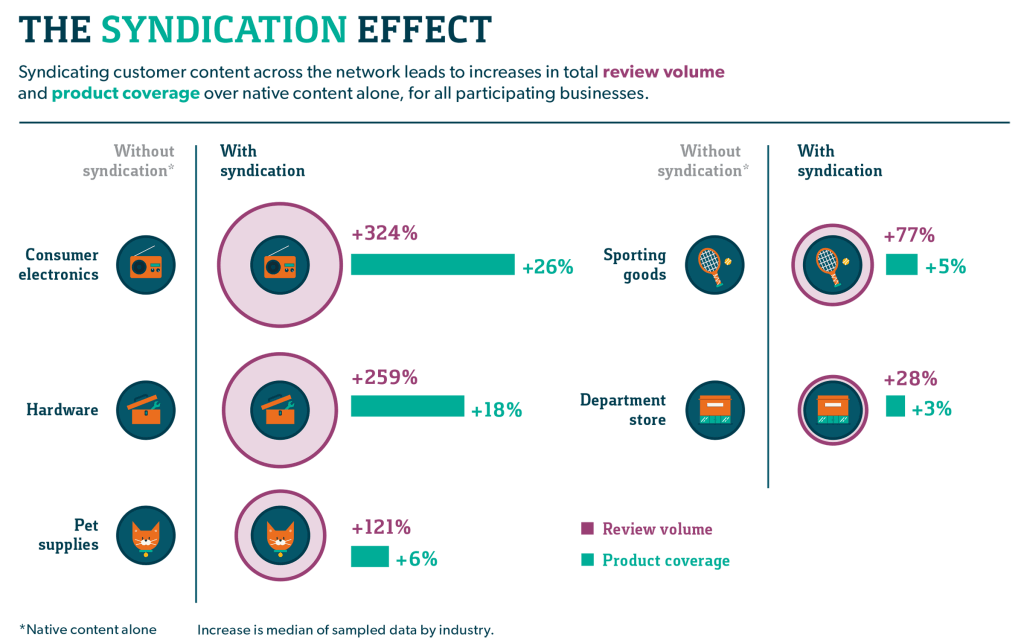

2022-02-22 | 1429 ![]() Print
Print ![]() PDF
PDF
This is a very interesting topic to me as it addresses one of the major functions of the SEO Web Analyst platform, ie the Community Blogging Platform. In this article, I will try to address all you need to know about content syndication and how it is highly relevant in content marketing, traffic generation, and SEO.

Content syndication is a quintessential means of content marketing these days and an integral part of web traffic, sales conversion, etc. Back in the day, the premier mode of content syndication was blog posts in the form of article directories, unlike today where we have more media outlets and means of syndication. Before we progress further I will like us to begin this article with an understanding of what content syndication really means.
Recommended Read: Content Marketing Strategy
Content syndication is the process of having your exact content being published on a different media outlet all pointing back to you as the original source.

mage credit: Izooto
Most Frequently Asked Question.
Now we have cleared the air on some hot questions bordering on content syndications, let us talk about the benefits.
One of the prominent merits of content syndication will be for brand awareness, and more visibility, with this, comes targeted traffic and sales generation.
In fact, it has been noted that brands selling consumer electronics experienced a 324% jump in reviews and a 26% jump in product coverage on syndicating their content.
“If you syndicate your content on other sites, Google will always show the version we think is most appropriate for users in each given search, which may or may not be the version you'd prefer." – Google Search Central
You can also link back to the original content Also, it’s a good practice to wait for a few weeks or months before syndicating the content to give the search engine enough time to identify the original post...although this defeat the purpose of driving traffic and creating awareness for your fresh contents.
The fact here is, we have merits and demerits, when it comes to content syndication, you need to be aware of what position you hold or what are merits you are getting from the content syndication platform.
It is a no-brainer for content creators to utilize the reach power of syndication tools but most young newbies don't understand that we do have different means of syndicating content online, and this is where content curation and content aggregation comes into play. In other to have effective content syndication publishing, it is best to understand what these two terms mean, "curation" and "aggregation".
Syndication is essentially re-using content as an advertising and publishing exercise. In review, the main difference between curation and aggregation is that curation is manual and aggregation is automated. Then both curation and aggregation are forms of syndicating or re-publishing existing content...as stated in marketecs.com
So from the explanation above we can now have a better understanding of the two inter-used terms in content marketing and can try to understand how to successfully use them for content syndication.
We have discussed the essence as to why content syndication should be a part and parcel of content creator asset tool for marketing, but not all tools are the same, in reference to the successful guide to content marketing we will be using SEO Web Analyst blogging platform as our yardstick to measure the potency of how to syndicate your content successfully online. (The guides we will be illustrating are totally based on SEO Web Analyst Blogging Community Platform).
First of all, it is imperative to understand the platform itself is a syndication tool for content creators, and it comes with the curating and aggregating tool for content re-publishing to other major platforms when connected to them. The platform can connect to over 30 major content platforms under social, microblogging, and blogging platforms alike with a copy of your content on the platform.
The major goal of the platform is to help content creators syndicate their content both manually and automated, the platform gives this off as both a freemium and premium version.
The platform also provides the means of content creators the avenue to monetize their content, with the use of Google AdSense, individual banner placements, and a PPI to bloggers.
Furthermore, the platform itself provides tools that are poise in visitors engagement and data capturing for content creators to easily build safelists, increase returning visits, get insightful data on your comparison-based content, all via their freemium tool RSS subscriptions, and premium tools polls, pop up and push notification system.
The best part is the re-publishing syndication system which you can do manually as earlier mentioned by using the blog curator tool to import your post and edit with a perfect free tool to help you weigh your content keyword density and keyword appraisal aka tag analyzer, you can find keywords to use as tags and also have a decisive idea of how your keywords stand out or rephrase your sentences with the help of the tag analyzer tool.
Using the platform itself to post can be of assistance when it comes to writer's block, with the aid of Search Engine Recommendation topics you can easily get interesting topics from the title bar by simply typing the first thing that comes to mind in your niche and form different keyword phrase mix to generate even more recommendations to use for a topic.
On the other side of things, your choice of topic might be of a thing of interest to you if you will be more inclined to perform a trend chart from the social mention tool (on the other part of the whole SEO Web Analyst Marketing Engine) where you get the sentiment score and the trend analysis of your chosen keywords on Twitter and Google.
Feeling lazy to post? Any experienced content creator knows the dilemma of how to write a blog post and the intricacies of trying to get it right the first time. So we have the Blog curator to aid with that, after finding the topic of your choice from a mix of keyword phrases in the title bar, you can do a search on search engines to pick the top 3 ranking URLs and import anyone of them that suits the blog curator tool for import. You are required to edit the content imported, remove unnecessary HTML tags and advert statements in the content body and furthermore include your own images, after which a spun button can be used to spin the article to provide a certain degree of uniqueness to the content prior publishing and broadcasting.
The platform by default includes an Original Author one-way link back to the original content as a sign of referencing and takes the published post on its platform as the canonical, due to this you have the option of controlling how your content is being re-published to other outlets.
You can either republish the original content on the platform if you are simply re-purposing your content or use the platform to post to your platform and other media outlets. ie, post the original content on the platform then spin the content to your platform and other outlet media (This will not come with an original author link).
With this method, you stay clear of duplicate content and plagiarism you also safeguard that your content is uniquely broadcast to other media outlets supported by the platform you have connected to it.
Using the RSS feed aggregator is the automatic aspect of content syndication which is also supported on the SEO Web Analyst Blogging Syndication Platform, apart from growing a blogging community, the platform allows bloggers to connect their website RSS atom feeds to the platform and automatically fetch the latest content to publish on its platform and also on other connected outlet media it supports that have been logged in by the user.
The downside to this is that the content being imported will not benefit from the content marketing tool of the platform aimed at improving your content quality for easy SEO ranking. Contents that are being published via the platform can be scheduled prior to publishing and not to mention each blogger or content creator does have their individual RSS URLs for RSS syndication sites.
The top five best blogging platforms of the century are visibly the most used and sort out content publishing platforms and they are already integrated on the SEO Web Analyst bloggers community platform for easy syndication as well. Alongside the content discovery plugins, it has in-built from Disqus and AddThis to help link other related and trending content to your readers.
So the question is well answered, if you have such a powerful content syndicating tool it is a no-brainer that your content will get the traction it deserves online.
Recommended Read: How To Start Blogging For Free With SEO Web Analyst Blogging Community Platform
Conclusion: There are many blogging tools that can help with content syndication as it is, but we do like to work with one that can help with capturing leads data and help with engagement and retention, not to mention alternative means to optimize our Google AdSense earnings and still being able to generate funds from our content materials. This was what we have built here with the SEO Web Analyst blogging community platform, after years of test running we did be glad to have content creators that are interested in coming onboard our bandwagon if you have ever felt the urge of getting more from your content to use this opportunity to follow us on our social media handles Facebook, Twitter, and Linkedin where you will be the first to get notified when we are 100% ready to unveil our promising powerful content syndication tool.

I am a seo web analyst and have a love for anything online marketing. Have been able to perform researches using the built up internet marketing tool; seo web analyst as a case study and will be using the web marketing tool (platform).
How To Fix GA4 Showing Wrong Domain Traffic
How To Reactivate Google Adsense Account
How Do You Write Pitch Deck That Wins Investors
Effective Lead Magnet Funnel Examples For Businesses
How To Promote FMCG Products Using Digital Marketing
The Main Objectives Of SEO in Digital Marketing
How Artificial Intelligence Is Transforming Digital Marketing
Google CEO Sundar Pichai: Search will profoundly change in 2025
3 Most Important Business Growth Strategies
Top 20 Work From Home Job Skills